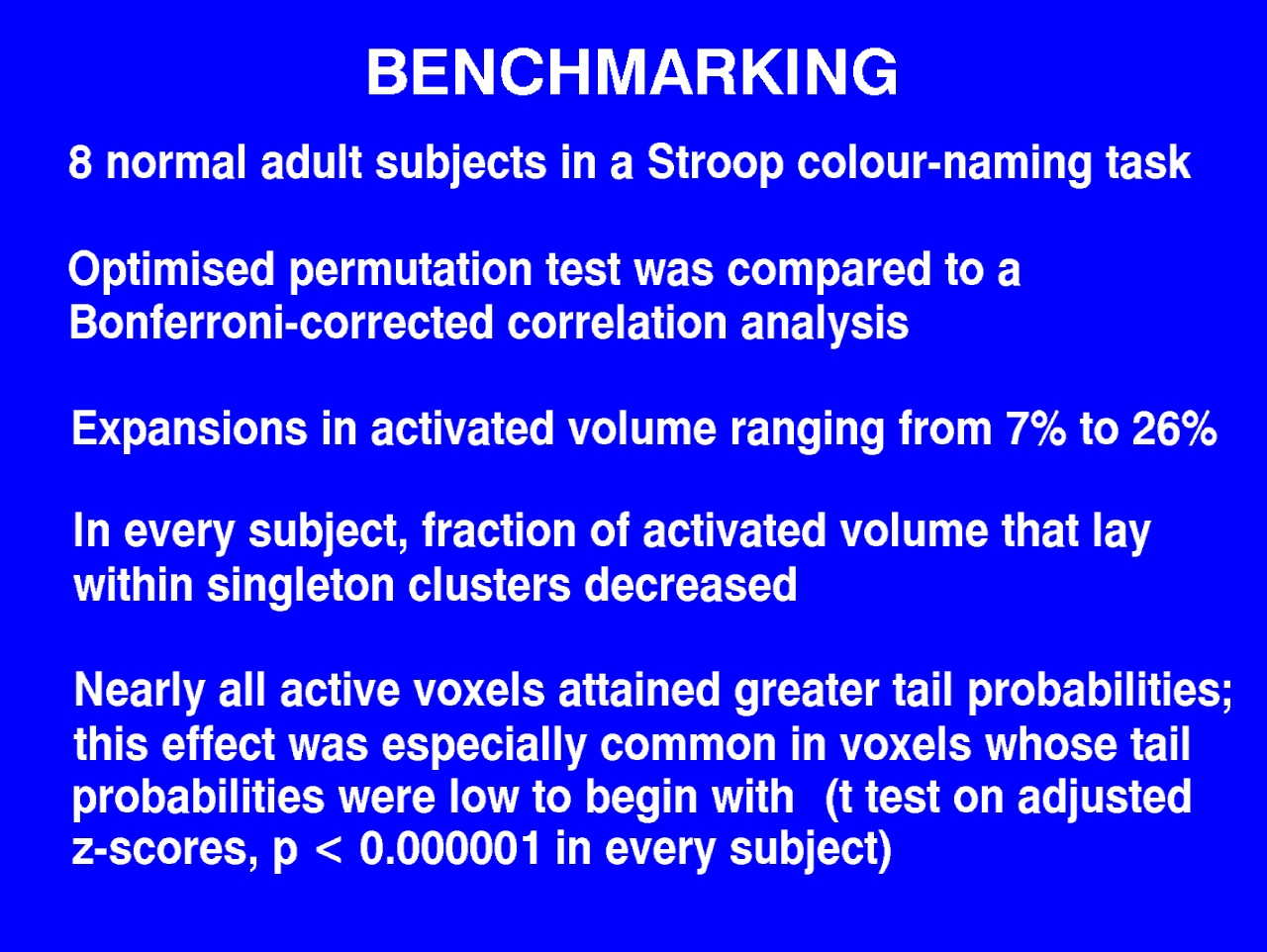
![[back]](../left_arrow.gif) |
![[programme]](../up_arrow.gif) |
![[next]](../right_arrow.gif) |

![[back]](../left_arrow.gif) |
![[programme]](../up_arrow.gif) |
![[next]](../right_arrow.gif) |
We wanted to see whether the permutation test would be more powerful at picking out activated voxels in the noisy data typical of cognitive paradigms. So we took data from eight subjects in a Stroop task, and compared probability values computed by the permutation test to those dervied via a Bonferroni-corrected parametric test.
Using a two-tailed significance criterion of 0.05 to define activation, we saw expansions in activated volume in every subject, ranging from 7% to 26%. Despite these increases in activated volume, the fraction of unclustered activations actually decreased -- this tells us that the permutation test tended to enlarge clusters, rather than adding isolated voxels.
Finally, in order to quantify the relationship between the two sets of probability estimates, we compared the z-scores of voxels that were more active under the permutation test and voxels that were more active under the parametric test. (We did this both using z-scores computed by the permutation test and those computed by the parametric test, and got the same highly significant result.)